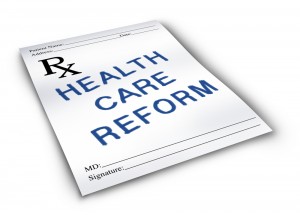Health insurance options are about to change for many Americans.
Starting Oct. 1, you can purchase health coverage through the Affordable Care Act health insurance exchange program. Coverage options depend on where you live. Some states have exchanges run by the federal government, whereas others have their own exchanges or ones created in conjunction with the Obama administration.
If by March 31, 2014 you have no health insurance through the exchanges or your employer, you face a fine of 1 percent of your yearly income or $95 per person — whichever is higher. The fee increases every year, rising to 2.5 percent of your yearly income in 2016 or $695 per person. That’s on aside of any health care costs.
Job-based insurances qualify as “minimum essential coverage.” Meaning, you won’t be fined for not having health insurance if you’re covered through your job. Due to your employer paying proportion of your premium, the coverage might be cheaper than the plans offered through the insurance exchange program. Depending on the job-based coverage available to you, you might not qualify for certain savings offered through the health insurance exchange program.
All of the available health insurance plans will offer “essential health benefits” for emergency services, maternity, neonatal and pediatric care, outpatient and rehabilitation services, counseling and therapy, preventive and wellness services and prescription drugs.
A catastrophic plan offers essential health benefits but has a higher deductible. Think of it as a safety net in case you have an unexpected accident or illness; you’ll pay less up front but more if you need it. The plan does cover three annual primary care visits and preventive services at no cost. To qualify for a catastrophic plan, you must be under 30 years old or get a “hardship exemption” because you’re unable to afford health coverage.
Dental care is considered an essential health benefit for children, but not for adults. Adults can choose a plan that includes dental coverage, or opt into a separate dental plan and pay an additional premium.
Children can be covered by their parents’ health insurance plan until they turn 26. If a dependent turns 26 during 2014, he or she can enroll in a new health insurance plan even after open enrollment closes March 31.
These plans have different costs depending on the coverage you choose, but all of them must be approved by state insurance department. You might qualify for cost savings based on your income.
For people who are worried about having a pre-existing condition. Starting 2014, you can’t be denied health insurance or charged more because you have a pre-existing health condition, even if you’ve been refused coverage in the past.
Your coverage options depend on your household income, not your employment status. Depending on your income, you might qualify for Medicaid or the Children’s Health Insurance Program. You might also qualify for lower monthly premiums and out-of-pocket costs through the health insurance exchange program.
You have six months to choose the health insurance plan that’s best for you and your family. Events, like the loss of a job, birth or a divorce, qualify you for a special enrollment period outside the October-to-March window. A 26-year-old dependent that loses his or her coverage through a parent’s plan can also enroll throughout the year.
Visit HealthCare.gov for further information.



